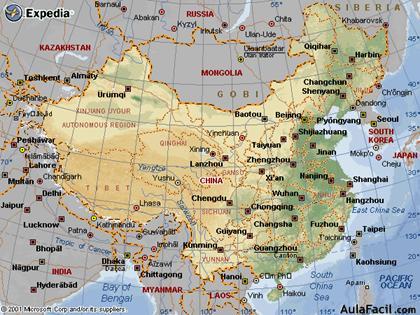Metro de Taipei 台北捷运
台北捷运
台北都会区包含台北市、新北市和基隆市,是全台湾最繁荣的地区。总人口高达七百多万人,除了本地居民外,还包含许多从外县市来工作或求学的民众。每到上下班的尖峰时段,马路上总是塞满汽车和机车,为了解决这个交通问题,政府于1988年开始动工建造捷运系统。目前台北捷运有六条线,连接许多观光景点以及离市中心较远的地区,如淡水、猫空、芦洲等。台北捷运票价从20至60台币不等,比起欧美国家便宜,也是一般人普遍认为居住在台北相当便利的原因之一。
Vocabulario
Caracteres | Pronunciación | Significado |
捷运 | Jiéyùn | Metro |
都会区 | Dūhuìqū | Área metropolitana |
包含 | Bāohán | Influir |
繁荣 | Fánróng | Próspero |
地区 | Dìqū | Región |
总 | Zǒng | Total |
人口 | Rénkǒu | Población |
百万 | Bǎi wàn | Millón |
本地 | Běndì | Local |
居民 | Jūmín | Residente |
尖峰时段 | Jiānfēng shíduàn | Hora punta |
马路上 | Mǎlù shàng | En las calles |
塞满 | Sāi mǎn | Lleno de |
汽车 | Qìchē | Coche |
机车 | Jīchē | Motocicleta |
为了 | Wèile | Con el fin de |
解决 | Jiějué | Resolver |
交通 | Jiāotōng | Tráfico, transportación |
问题 | Wèntí | Problema |
政府 | Zhèngfǔ | Gobierno |
动工 | Dònggōng | Comenzar la construcción |
建造 | Jiànzào | Construir |
系统 | Xìtǒng | Sistema |
目前 | Mùqián | Actualmente |
线 | Xiàn | Línea |
连接 | Liánjiē | Conectar |
远 | Yuǎn | Lejos |
票价 | Piào jià | Tarifa del pasaje |
从...至 | Cóng... Zhì | De... a... |
便宜 | Piányi | Barato |
便利 | Biànlì | Conveniente |
原因 | Yuányīn | Razón |
Transcripción fonética en pinyin
Táiběi dūhuìqū bāohán Táiběi Shì, Xīnběi Shì hé Jīlóng Shì, shì quán Táiwān zuì fánróng de dìqū. Zǒng rénkǒu gāodá qībǎi duō wàn rén, chúle běndì jūmín wài, hái bāohán xǔduō cóng wài xiànshì lái gōngzuò huò qiúxué de mínzhòng. Měi dào shàng xiàbān de jiānfēng shíduàn, mǎlù shàng zǒng shì sāi mǎn qìchē hé jīchē, wèi le jiějué zhège jiāotōng wèntí, zhèngfǔ yú yījiǔbābā nián kāishǐ dònggōng jiànzào jié yùn xìtǒng. Mùqián Táiběi jiéyùn yǒu liùtiáo xiàn, liánjiē xǔduō guānguāng jǐngdiǎn yǐjí lí shì zhōngxīn jiào yuǎn de dìqū, rú Dànshuǐ, Māo kōng, Lúzhōu děng. Táiběi jiéyùn piàojià cóng érshí zhì liùshí Táibì bù děng, bǐ qǐ Ōuměi guójiā piányi, yěshì yìbānrén pǔpiàn rènwéi jūzhù zài Táiběi xiāngdāng biànlì de yuányīn zhī yī.
Traducción en español
Metro de Taipei
El área metropolitana Taipei incluye la ciudad de Taipei, la ciudad de Nuevo Taipei y la ciudad de Keelung, siendo la región más próspera de Taiwán. La población total es más de siete millones de habitantes. Además de los residentes locales, también incluye muchas personas de otras ciudades que llegan por motivo de trabajo o estudio. A la hora punta de salida al/del trabajo, las calles siempre estaban llenas de coches y motocicletas. Con el fin de resolver el problema del tráfico, el Gobierno en 1988 comenzó la construcción del sistema de transportación de metro. Actualmente el sistema de metro de Taipei tiene seis líneas que conectan muchos sitios turísticos y también lugares lejanos del centro de la ciudad, como Tamsui, Maokong, Luzhou etc. La tarifa del pasaje va de 20 a 60 dólares taiwaneses. Es más barata que la de los países europeos y norteamericanos, razón por la que la mayoría de la gente considera muy conveniente vivir en Taipei .


